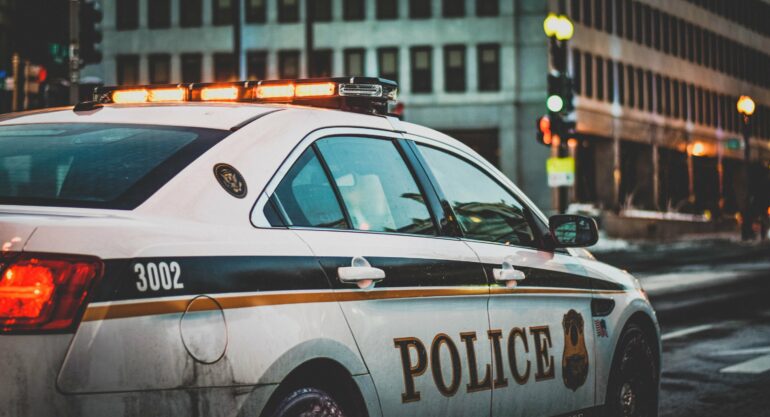Tyre Nichols, a 29-year-old Black man who died after a confrontation with police during a traffic stop earlier this month in Memphis, has become the latest face in a racial justice and police reform movement fueled by a string of similar cases in which Black men have died from injuries sustained while being taken into custody.
While these cases have spurred calls for greater law enforcement investment in diversity training, new research from Washington University in St. Louis suggests that the day-long implicit bias-oriented training programs now common in most U.S. police departments are unlikely to reduce racial inequity in policing.
“Our findings suggest that diversity training as it is currently practiced is unlikely to change police behavior,” said study lead author Calvin Lai, assistant professor of psychological and brain sciences in Arts & Sciences at Washington University in St. Louis.
“Officers who took the training were more knowledgeable about bias and more motivated to address bias at work,” Lai said.” However, these effects were fleeting and appear to have little influence on actual policing behaviors just one month after the training session.”
Published Feb. 3 in the journal Psychological Science, the study evaluates the experiences of 3,764 police officers from departments across the nation who participated in one-day bias training sessions provided by the non-profit Anti-Defamation League.
The interactive workshops, which emphasize discussion and active learning over lecturing, were designed to help officers understand how their worldview is shaped by their identity and culture and to appreciate how these biases may affect their behavior.
Lai’s evaluation of the program, which covered 251 training sessions held between July 2019 and January 2022, is based on police officers’ self-reported responses to surveys conducted before training, immediately after training and one month later.
When officers were asked to describe their thoughts about the training, many reported that it was surprising and insightful. For instance, one officer wrote “it has opened my eyes to the bias we all have as human beings” and another said, “I really liked the course because it opened my eyes to implicit biases I never knew I had.”
Officers participating in the study had an average of 15 years of service and most had been with their departments for more than five years. Most were below the rank of sergeant, 77% were male and 79% held a bachelor’s degree or higher. Among those who reported their race, 47% were white, 20% were Black, 27% were Hispanic/Latino and 2% were Asian.
The final section of the training program focused on building skills to manage bias in policing. These strategies included mindfulness, such as intentionally bringing bias awareness to the present moment, and other interventions designed to help officers avoid perceptions based on negative stereotypes and see people as unique individuals with their own points of view.
While the training produced an immediate and long-lasting understanding of bias, it delivered only a temporary bump in concerns about bias and in the motivation to use strategies to limit bias in law enforcement interactions.
“Educating about implicit bias was effective for durably raising awareness about the existence of subtle or implicit biases, but little else,” Lai said. “Our study indicates that the current generation of diversity training programs are effective at changing minds but less consistent at changing behavior.”
Lai, who is currently working with the U.S. Department of Justice’s Office of Community Oriented Policing Services to develop a new managing bias training course for law enforcement agencies, says it’s important to manage expectations about what can be accomplished in a single, standalone training session.
His study documents shortcomings in the Anti-Defamation League’s Managing Bias program, which he considers to be one of the nation’s best available diversity training programs. The program is research-based, comes with an 80-page instruction manual and is delivered by two-person teams of highly trained facilitators.
“The day-long training is more intensive than other diversity trainings, which are often only one to three hours,” Lai said. “And yet, we found little evidence for long-term efficacy.”
Lai’s research suggests that police departments can boost the effectiveness of diversity training by showing a genuine, long-term commitment to program goals and ensuring that classroom bias training lessons are embedded with other organizational initiatives, reinforced by police managers and evaluated as a part of job performance.
“Changing minds is hard, creating social change is difficult, but that doesn’t mean it isn’t worth doing,” Lai said. “We have to eliminate this all-or-none thinking about the effectiveness of implicit bias training and focus on specific changes that police departments can implement to make a real difference in outcomes.”
This study was supported by grants from the Anti-Defamation League and the Russell Sage Foundation. Co-authors include Jacklyn Lisnek, a former lab manager in Lai’s lab now pursuing a doctoral degree in social psychology at the University of Virginia.
More information:
The impact of implicit-bias-oriented diversity training on police officers’ beliefs, motivations, and actions, Psychological Science (2023). DOI: 10.1177/0956797622115061
Provided by
Washington University in St. Louis
Citation:
Commonly used police diversity training unlikely to change officers’ behavior, study finds (2023, February 4)



